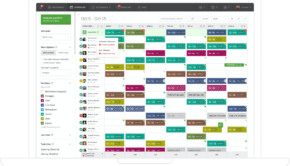Tips on Organizing Meetings
When we talk about meeting organization, planning is the key! If a meeting is not properly planned, all the hours spent on it will likely be a complete and utter waste of time. For a meeting organizer, it is crucial to use skills and resources in such a way that all the participants, clients, guests, and employees are informed beforehand very clearly about the time, place, and duration. It is very easy to point fingers at others when their meetings are not productive, but the question is, are your meetings productive and wholesome?
To ensure that, we have come up with some tips on how to organize effective meetings.
Here is what you do do organize meetings effectively
PURPOSE OF THE MEETING
We understand that workplaces hold these meetings to practice communication and collaboration. However, sometimes the meetings are completely pointless and turn out to be a waste of time for everyone. To ensure that the meeting is productive when inviting everyone for the meetings, write 10 to 15 lines on what the purpose of the meeting is and what you expect out of this.
This way, the employees and everyone who is attending the meeting will know what to expect out of this and they will come prepared.
PLAN THE MEETING
Once you have figured out what the purpose behind the meeting is, it is time to send out invites, decide the location, the timings, and the duration of the meeting. This step is very important, if there is a mistake in this step, then the whole meeting will become ineffective. If the employees are not sure of the time or the location of the meeting, then many might not be able to come which will decrease the attendance percentage of the meeting, making it ineffective and fruitless.
MAKE INVITING EFFECTIVE
One cannot expect to send separate invites to all those who have to attend the meeting. Organizations usually have software on which meetings and such events are scheduled. So, once there is a meeting scheduled, employees will be notified with proper timing and location. Some organizations also use the manual method, for instance, they have a diary on the reception which the employees have to check every morning to know about the day’s events or meetings.
These systems ensure that if employees have more than one meeting, then the duration of each should not clash with the other. These systems make it easier, both for the meeting organizer and the employees to organize and attend meetings.
ALWAYS START ON TIME
If the meeting invitation says that the meeting will start at 11.30 a.m. then the meeting should start on time always! Another important thing to note is that when you are deciding the time duration of the meeting, always ask for more time than you need. If the meeting time says 11:30 a.m. then start till 11:03 and end half an hour early. People are always very happy when the meeting ends early, however that is not the case when it starts late.
COME EARLY FOR THE SETUP
If you are the meeting organizer, all the responsibility lies on your shoulder. To ensure everything is in place and according to your instruction, the meeting organizer should always arrive early at the venue to ensure that the meeting arrangements are in place. By coming early, you can check if the meeting room is clean and tidy, the projector and the speakers are working or not, the air conditioner is working or not. Apart from these, it always leaves a good impression if you print a copy of the meeting agenda and place it on every seat in the room. The agenda should cover the minutes of the meetings of the previous meeting, reports, and progress and what is the current status. Moreover, copies of proper documentation (if needed) should be placed on every seat and stationery items like a pencil or a pen and a blank page too.
DOCUMENTATION OF THE MEETING
Before the meeting, a person with good writing skills should be assigned the task of writing minutes of the meetings. This task is essential as it is a legal implication. The minutes of the meeting should include the day, date, and duration of the meeting. Who was attending the meeting, what was the whole purpose of the meeting, and what was discussed in the meeting? Recording minutes of the meeting are very important, as it is required for other meetings but also when in case an investigation is required at the workplace, these minutes of the meetings are served as documents that show what was happening during the meetings.
Last but not the least, sending a report of the meeting in the next 24 hours ensures that the meeting went effective and productive.
Photo by Dylan Gillis on Unsplash
















